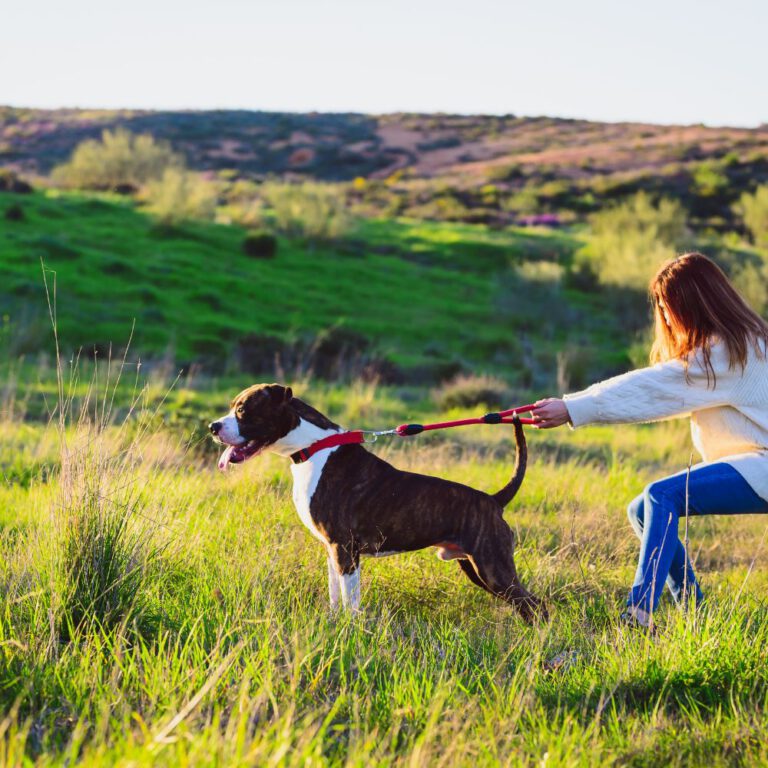Handling Common Behavioral Issues in Dogs

Dogs are wonderful companions, but they sometimes exhibit behaviors that can be challenging to manage. Understanding and addressing these issues can lead to a happier, healthier relationship between you and your furry friend. Here’s a straightforward guide to dealing with some of the most common behavioral problems in dogs.
Excessive Barking
Barking is a natural way for dogs to communicate, but excessive barking can become a problem.
Why Dogs Bark:
- Alerting to strangers or unusual sounds
- Seeking attention
- Boredom or frustration
- Anxiety or fear
How to Manage It:
- Identify the Cause: Observe when and why your dog is barking. This can help you address the root cause.
- Training: Teach your dog the “quiet” command using positive reinforcement. Reward them when they stop barking on command.
- Exercise: Ensure your dog gets enough physical and mental stimulation to prevent boredom.
- Avoid Reinforcement: Don’t reward barking with attention. Ignore your dog when they bark for attention and reward them when they are quiet.
Chewing
Dogs love to chew, but inappropriate chewing can be destructive.
Why Dogs Chew:
- Teething (puppies)
- Exploring their environment
- Boredom or excess energy
- Anxiety or stress
How to Manage It:
- Provide Chew Toys: Offer a variety of safe chew toys to satisfy their need to chew.
- Puppy-Proof Your Home: Keep valuables and dangerous items out of reach.
- Exercise: Make sure your dog gets enough physical activity to reduce boredom.
- Training: Teach your dog what is acceptable to chew. Redirect them to appropriate items and praise them when they chew on their toys.
Jumping Up
Jumping up can be annoying and even dangerous, especially for large dogs.
Why Dogs Jump Up:
- Seeking attention
- Excitement
How to Manage It:
- Ignore the Behavior: Don’t reward jumping with attention. Turn away and avoid eye contact until your dog is calm.
- Teach an Alternative: Train your dog to sit when greeting people. Reward them for sitting calmly.
- Consistent Responses: Ensure everyone in the household and visitors follow the same rules to avoid confusion.
Pulling on the Leash
Walking a dog that pulls on the leash can be frustrating and uncomfortable.
Why Dogs Pull:
- Excitement and eagerness to explore
- Lack of leash training
How to Manage It:
- Use the Right Equipment: Consider using a no-pull harness to reduce pulling.
- Training: Practice loose-leash walking. Stop walking when your dog pulls and resume only when the leash is slack. Reward your dog for walking by your side.
- Exercise Before Walks: A tired dog is less likely to pull. Give your dog some exercise before leash training.
Separation Anxiety
Some dogs become anxious when left alone, leading to destructive behaviors.
Signs of Separation Anxiety:
- Excessive barking, howling, or whining
- Destructive chewing or scratching
- Pacing or drooling
How to Manage It:
- Gradual Desensitization: Start by leaving your dog alone for short periods and gradually increase the duration.
- Comfort Items: Provide toys or clothing with your scent to comfort your dog.
- Create a Safe Space: Designate a comfortable area with their bed and favorite toys.
- Professional Help: Severe cases may require the help of a professional trainer or veterinarian.
Digging
Dogs may dig for fun, to escape, or due to anxiety.
Why Dogs Dig:
- Seeking comfort or shelter
- Hunting for small animals
- Boredom or excess energy
- Anxiety or stress
How to Manage It:
- Provide a Digging Area: Create a designated digging spot in your yard and encourage your dog to dig there.
- Exercise and Mental Stimulation: Ensure your dog gets plenty of physical and mental activity to reduce boredom.
- Deterrents: Use safe deterrents to discourage digging in unwanted areas.
- Training: Redirect your dog to the designated digging spot and reward them for using it.
Conclusion
Dealing with common behavioral issues in dogs requires patience, consistency, and understanding. By identifying the root causes and using positive reinforcement techniques, you can effectively manage and correct unwanted behaviors. Remember, a well-exercised and mentally stimulated dog is often a well-behaved dog. Happy training!
Related Articles
- Leash Training: A Comprehensive Guide for Dog Owners
- Dog Training for Beginners: A Comprehensive Guide
- First Visit to the Vet with Your Dog
- Best Toys for Active Dogs






